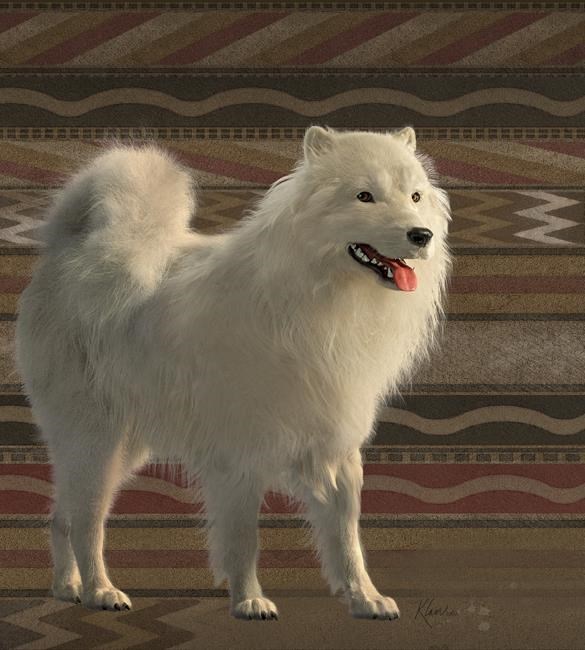VANCOUVER — For thousands of years, a breed of white, woolly dog played an important and cultural role for Coast Salish people in Western Canada but when colonists moved in the animal quickly became extinct, a new study says.
It started with a dog named Mutton that died in 1859. Its pelt had been in a collection at the National Museum of Natural History, Smithsonian Institution in Washington, D.C.
DNA analysis on the pelt, coupled with traditional knowledge from the Coast Salish people, provided new insights on the dog once bred for its unique woolly coat.
The study in the journal Science released Thursday says the dog was believed to be introduced in the Americas about 15,000 years ago, and the Coast Salish peoples carefully maintained the genetic integrity of the animal leading up to colonization.
Audrey T. Lin, a post-doctoral fellow at the American Museum of Natural History in New York City and the lead author of the study, says their study highlights the “direct and devastating” impacts of colonialism.
Coastal archaeologist Iain McKechnie from the University of Victoria, co-author of the study, says the dogs were pampered by the Coast Salish, fed a special diet and their coats were regularly combed.
The animals thick woollen undercoat was shorn for weaving blankets and textiles, but increasing settler colonialism forced the decline of the tradition in the 19th century and the Indigenous dog population was lost.
McKechnie says the study also shows the history of Indigenous people in Western Canada and their "love and caring" for the woolly dogs.
The decline of the dogs through the 19th century isn’t fully understood, the study says.
The introduction of trade blankets into the coastal region would be an oversimplification for the abandonment of the woolly dog, it says.
“Survival of the woolly dogs depended upon the survival of their caretakers, in addition to disease, expanding colonialism, increased cultural upheaval, displacement of Indigenous Peoples and diminished capacity to manage the breed.”
Coast Salish artist Eliot White-Hill, whose Indigenous name is Kwulasultun, says even though the dogs have been extinct for more than a century their stories are still an important part of the Coast Salish community.
Nanaimo, a city on Vancouver Island's east coast, was a wool dog sanctuary, which kept wool dogs from interbreeding, he says.
“These wool dogs were at the centre of our social and economic systems. I know that in my community at least they were owned and passed down matrilineally."
White-Hill says a story shared by elders talks of how a raven tricked the woolly dogs, which were tired of being pampered, and the dogs snuck out of the village to find the raven.
The artist says he's working on a children's book to tell the legend.
"We still just love and cherish these little dogs," he added.
Coast Salish spinning and textiles expert Liz Hammond-Kaarremaa, another co-author of the the study, says the knee-high woolly dog had a sharp, foxlike face, and its fur could grow up to six inches or 15 centimetres long.
She says she interviewed an elder from theCoast Salish nation in British Columbia for the study, who said her great-grandmother was forced to get rid of dogs by Indian agents.
Women of high status had woolly dogs at that time, but Indian agents did not allow that, she says.
Kaarremaa says the stories were difficult to hear.
“I feel so sad about it. I also feel that it’s important that people hear this."
White-Hill says many Salish people are excited about the idea of bringing the woolly dogs back one day.
“I don't know if we have to go the 'Jurassic Park' route," said White-Hill, referring to the science fiction book and movie where genetic scientists were able to undo the extinction of some dinosaurs.
"I think that one thing that's really powerful is that there are still breeds of dogs that are similar to the wool dogs that exist today."
This report by The Canadian Press was first published Dec. 14, 2023.
Nono Shen, The Canadian Press


